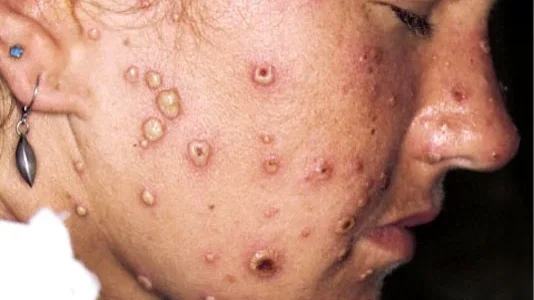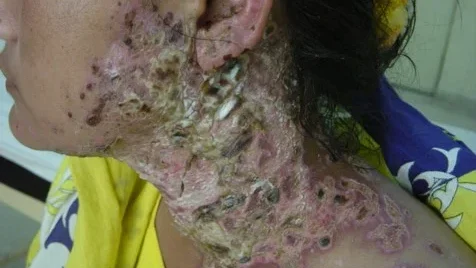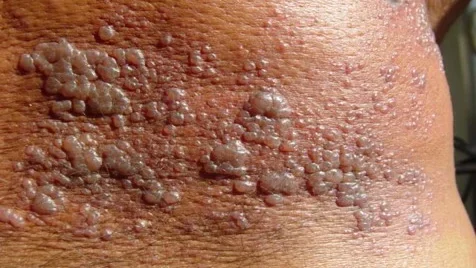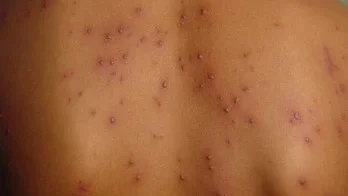Introduction
Cutaneous viral infections represent one of the most prevalent dermatological conditions worldwide, significantly impacting global health through substantial morbidity and mortality. Among these infections, varicella-zoster virus (VZV) manifestations—primarily chickenpox (varicella) and herpes zoster (shingles)—stand as critical medical conditions requiring prompt recognition and appropriate management to minimize complications and prevent community transmission.
The varicella-zoster virus, a DNA herpesvirus, demonstrates a unique biphasic disease pattern, initially causing chickenpox during primary infection and subsequently remaining dormant in dorsal root ganglia before potentially reactivating as herpes zoster later in life. Understanding the pathophysiology, clinical presentations, and management strategies for these conditions is essential for healthcare providers across all specialties.
Viral Characteristics and Pathogenesis
Viruses are obligate intracellular parasites consisting of nucleic acid (DNA or RNA) surrounded by a protein coat called a capsid. The varicella-zoster virus belongs to the herpesvirus family and contains double-stranded DNA within its structure. This virus demonstrates remarkable adaptability, establishing latency in nerve ganglia following primary infection.
The pathogenesis of chickenpox begins with viral transmission through respiratory droplets or direct contact with infected lesions. Following initial exposure, the virus replicates in the nasopharynx, leading to primary viremia. The virus is subsequently engulfed by the reticuloendothelial system, followed by secondary cyclical viremia that results in the characteristic cutaneous manifestations.
According to the World Health Organization (WHO), varicella affects virtually all susceptible individuals exposed to the virus, with attack rates reaching 85% among household contacts. The Centers for Disease Control and Prevention (CDC) reports that before widespread vaccination programs, chickenpox affected approximately 4 million people annually in the United States alone.
Chickenpox: Clinical Presentation and Epidemiology

Epidemiological Patterns
Chickenpox demonstrates high prevalence globally, with peak incidence occurring between 2-10 years of age. The condition is highly infectious, with studies showing an 85% attack rate among household contacts. According to epidemiological data from the WHO, chickenpox remains endemic in populations lacking widespread vaccination programs.
Clinical Features
The clinical course of chickenpox follows a predictable pattern. The incubation period typically ranges from 14-17 days, followed by a prodromal phase lasting 2-3 days preceding the characteristic eruption. This prodrome includes fever, chills, and headache, though it’s notably uncommon in young children.
The cutaneous eruption represents the hallmark of chickenpox, characterized by rapid progression through distinct morphological stages. Lesions begin as macules that evolve into papules within hours, subsequently developing into vesicles on erythematous bases, then pustules, and finally crusts over 2-4 days. Complete healing with pink depressions occurs within 1-3 weeks.
A pathognomonic feature of chickenpox is polymorphism—the simultaneous presence of lesions in all stages of development at any given site. The distribution pattern is centripetal, predominantly affecting the face, scalp, and trunk, with relative sparing of extremities. Mucosal involvement, including oral and ocular surfaces, occurs frequently.
Associated symptoms include moderate to severe pruritus and fever that persists as long as new lesions continue to erupt, potentially reaching 105°F (40.6°C). Research published in the Journal of Infectious Diseases indicates that fever duration correlates directly with lesion eruption patterns.
Complications
While complications are rare in healthy children, certain populations face increased risks. Adults, neonates, and immunocompromised individuals experience higher complication rates. Potential complications include:
Cutaneous complications: Secondary bacterial infection remains the most common complication, particularly when lesions are traumatized through scratching. Scarring, while not typical, increases significantly with bacterial superinfection.

Systemic complications: Pneumonia represents a serious complication, particularly in adults and immunocompromised patients. Other systemic manifestations include hepatitis, encephalitis, and thrombocytopenic purpura. According to studies published in Clinical Infectious Diseases, mortality rates reach 7-10% in immunocompromised patients.
Herpes Zoster: Reactivation and Clinical Manifestations
Pathophysiology of Reactivation
Herpes zoster results from reactivation of latent varicella-zoster virus residing in dorsal root ganglia following primary chickenpox infection. Several factors precipitate reactivation, including advanced age, immunocompromised states, radiation exposure, and surgical trauma. The virus travels along sensory nerve pathways to reach the skin or mucous membranes, producing the characteristic dermatomal distribution.
Clinical Presentation
The clinical course of herpes zoster typically begins with a prodromal phase lasting several days, characterized by severe pain and paresthesias in the affected dermatome. This pain, particularly intense in elderly patients, can simulate various medical conditions including myocardial infarction, pleurisy, appendicitis, or cholecystitis, leading to diagnostic challenges.
The characteristic rash consists of grouped vesicopustules on an erythematous base, appearing in a unilateral dermatomal distribution. Common sites include the thoracic dermatomes (T3-L2) and the ophthalmic division of the trigeminal nerve. Lesions crust within 7-10 days, with crusts persisting for 2-3 weeks before resolution, often leaving scarring and pigmentary changes.
A critical variant is herpes zoster ophthalmicus, affecting the ophthalmic division of the trigeminal nerve. This presentation carries significant risk for ocular complications and post-herpetic neuralgia, making early recognition and treatment paramount.

Complications
Herpes zoster complications can be categorized into cutaneous, neurological, ocular, and visceral manifestations:
Cutaneous complications include secondary bacterial infection, gangrene, scarring, and cutaneous dissemination in immunocompromised patients.
Neurological complications represent the most significant morbidity source. Post-herpetic neuralgia (PHN), defined as pain persisting after rash resolution, affects up to 30% of patients over 50 years according to studies in Pain Medicine journals. This severe, intractable pain can persist for months to years, significantly impacting quality of life and occasionally leading to suicidal ideation. Additional neurological complications include peripheral nerve palsy, cranial nerve palsy, and sensory loss.
Ocular complications occur specifically with herpes zoster ophthalmicus and include conjunctivitis, keratitis, corneal erosion and opacity, potentially resulting in blindness.
Visceral complications may include pneumonia, hepatitis, arthritis, gastritis, and cystitis, particularly in immunocompromised patients.
Management Strategies
Chickenpox Treatment
Management of chickenpox varies significantly based on patient age and risk factors:
Healthy children (2-12 years) typically require only symptomatic treatment including rest, topical calamine lotion for pruritus relief, antipyretics for fever management, antihistamines for itching, and antibiotics only if secondary bacterial infection develops.
High-risk patients including adolescents and adults over 13 years, immunocompromised individuals, and pregnant women require systemic antiviral therapy. Treatment options include:
- Acyclovir: 800 mg five times daily for 7 days
- Famciclovir: 500 mg every 8 hours for 7 days
- Valacyclovir: 1000 mg every 8 hours for 7 days
Antiviral therapy must be initiated within 24 hours of rash onset for optimal effectiveness.
Herpes Zoster Treatment
Herpes zoster management focuses on reducing viral replication, minimizing complications, and preventing post-herpetic neuralgia:
Topical treatments include cool compresses and calamine lotion for symptomatic relief. Topical steroids are contraindicated, and topical antivirals demonstrate limited effectiveness.
Systemic antiviral therapy is recommended for patients over 50 years, those with herpes zoster ophthalmicus, and immunocompromised individuals. The same antiviral regimens used for chickenpox apply, with treatment ideally initiated within 72 hours of lesion onset.
Pain management requires multimodal approaches including analgesics, tricyclic antidepressants (amitriptyline 25 mg at bedtime), and anticonvulsants (gabapentin, carbamazepine). According to guidelines published in the Journal of the American Academy of Dermatology, early aggressive pain management significantly reduces post-herpetic neuralgia risk.
Prevention Strategies
Vaccination Programs
The development of live-attenuated varicella-zoster virus vaccines has revolutionized prevention strategies. The CDC recommends routine childhood immunization with a single dose at 12-18 months of age. For individuals over 13 years without previous infection, two doses administered 4 weeks apart are recommended.
Studies published in the New England Journal of Medicine demonstrate vaccine effectiveness rates exceeding 95% in preventing severe chickenpox and significantly reducing herpes zoster incidence in vaccinated populations.
Public Health Impact
Implementation of comprehensive vaccination programs has dramatically reduced varicella-related morbidity and mortality. According to WHO surveillance data, countries with universal vaccination programs report over 90% reduction in chickenpox-related hospitalizations and deaths.
Contemporary Research and Future Directions
Recent research published in Nature Microbiology has enhanced understanding of varicella-zoster virus latency mechanisms and reactivation triggers. Studies investigating novel therapeutic approaches, including improved antiviral agents and targeted pain management strategies for post-herpetic neuralgia, show promising results.
Emerging research focuses on identifying genetic factors predisposing individuals to severe complications and developing personalized treatment approaches based on individual risk profiles.
Conclusion
Cutaneous viral infections, particularly those caused by varicella-zoster virus, remain significant global health concerns requiring comprehensive understanding and appropriate management. Early recognition, prompt antiviral therapy when indicated, and effective pain management strategies significantly improve patient outcomes and reduce complication rates.
The implementation of widespread vaccination programs has dramatically altered the epidemiology of these conditions, though continued vigilance remains necessary for managing breakthrough cases and unvaccinated populations. Healthcare providers must maintain high clinical suspicion, particularly for herpes zoster presentations that may mimic other serious medical conditions.
Correct diagnosis and management of chickenpox and herpes zoster lead to early resolution of skin lesions, significantly reduced morbidity, and prevention of potentially devastating complications. As our understanding of viral pathogenesis continues to evolve, future therapeutic interventions promise even better outcomes for patients affected by these challenging conditions.
The message remains clear: timely recognition and appropriate treatment of varicella-zoster virus infections can dramatically improve patient outcomes and prevent the severe complications that have historically made these conditions among the most feared dermatological presentations in clinical practice.
Note: This knowledge based blog is based on the comprehensive presentation by Dr. Tariq Rashid, Professor of Dermatology, and incorporates current medical literature and international health organization guidelines for the management of cutaneous viral infections.

